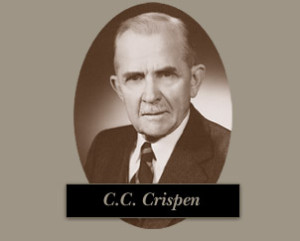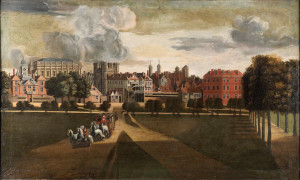These days, we’ve become used to, reliable, safe, well-constructed, state-of-the-art stair lifts that come with sophisticated electronics and hand-held remote controls. We take for granted that a stair lift can usually be installed even when the stair case is an awkward or unusual shape. We don’t blink an eye when stair lifts are installed outside buildings. Needless to say, it wasn’t always this way.
Hauling Henry
It’s impossible to say precisely who invented the stair lift or exactly when the first one was made but there is some evidence, by way of a list of his possessions, to suggest that King Henry VIII had something akin to a “Throne Lift” installed in the Whitehall Palace in London which was, at the time, the main residence of English monarchs. (Until it was all but destroyed by fire in 1698.)
Henry in his earlier life had been a keen sportsman with a passion for hunting and jousting but with that came inevitable injury and he suffered two quite serious leg injuries. He sustained the second one in his forties in a jousting accident that very nearly killed him.
The injury never healed properly, becoming ulcerated and painful, and prevented him from pursuing his former sporting passions. Henry had always been an enthusiastic consumer of food and wine and now, without physical activity to hold it in check, his weight ballooned until he eventually weighed between 28 and 30 stone.
Pity then the poor servants who had to haul him upstairs upon his “Throne Lift” using nothing more than a block and tackle arrangement – and their own muscles.
The Inclin-ator
Fast forward some 400 hundred years to the 1920s and we meet a Cadillac car dealer from Pennsylvania by the name of C. C. Crispen who enjoyed dabbling in engineering as a hobby.

A friend of his had become immobilised due to Polio and was largely confined to the upstairs of his home. So Crispen came up with the idea of a seat on rollers connected to a rail that ran the length of the stair case and which was operated by a cable mechanism and powered by electricity.
He called this The Inclin-ator and it worked so well that he developed the idea until it eventually gave birth to the Inclinator Company of America, which still exists to this day. (But which, ironically, no longer makes stair lifts, concentrating instead on vertical lifts.)
However, not only did it give birth to the company, it also gave birth to the word “Inclinator” which, while notably absent from all reputable dictionaries, has nonetheless been adopted by Americans, in particular, to describe anything that goes up and down: elevators, lifts, stair lifts etc.
(A bit like the way they’ve adopted the word burglarize to mean burgle. Why use two syllables when you can add a pointless extra one for free? What next? I’ve just been muggered?)
Fun with Funiculars
Inclinator is also used by our American cousins to describe what we Brits would call a funicular railway. Funiculars, though, always have two cars attached to each other by a cable that runs through a pulley at the top of the steep slope upon which the railway is laid. The two cars, one ascending and one descending, counter balance each other thus minimizing the amount of energy required to lift the car going up. Bournemouth still has three funicular railways running which are not to be missed if you’re ever visiting. Brilliant concept but probably not want you want in your home!
But anyway – hats off to old C. C. Crispen. All of us at Newbury Mobility have seen many, many different kinds of stair lifts in our time and we’ve come across some pretty ancient ones as well. All of them, though, are essentially refinements or adaptations of Mr Crispen’s first prototype. So he pretty much nailed the concept first time.
Veteran Vehicles
And while we’ve been taking this historical tour, we’ve also been remembering some of the ancient mobility scooters we occasionally encounter when we visit to make a free site survey or to install a stairlift.
Some of you will remember the old “Invalid Carriage” which thankfully we don’t see on the roads anymore due to it being, some might say, a bit of a deathtrap.
What we do occasionally see though, are old Batricars, some of which appear still to be going strong.

Those that aren’t often achieve a second life by being converted into Toylanders.

Courtesy of The Toylanders Owners club
None of us at Newbury Mobility need a Toylander. Indeed, we’re all rather too big. But we all really, really want one.
One day perhaps.
Meanwhile, we look forward to hearing from anyone in Berkshire, Oxfordshire, Wiltshire or Hampshire who has a stair lift, ancient or new, and who requires a repair or service. Or anyone who wants to have a chat about having a used or new stairlift installed in their home.
We’re no more than an hour away, after all.
All the very best
Andy and the team.






